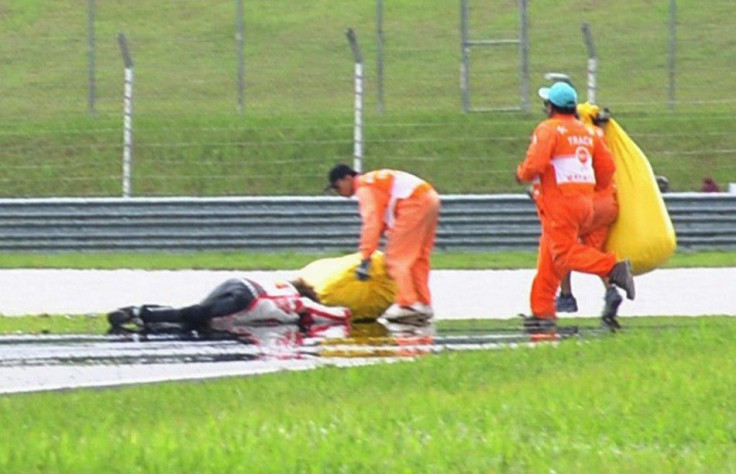Marco Simoncelli Crash Highlights High Risk in Motorsports: 122 Deaths in 65 Years

The automotive sports world was struck by another big blow this weekend when racer Marco Simoncelli, a young, rising MotoGP racer, was killed in a high-speed crash at the Malaysian Motorcyclying Grand Prix. Simoncelli was just 24 years old. The death of the Simoncelli comes just one week after the death of IndyCar racer Dan Wheldon, who was 33.
Both deadly crashes have prompted discussion among the top governing bodies in automotive sports about the safety of their athletes; it's also revealed some unfavorable truths about the most popular high-speed sports leagues.
There have been 25 deaths in the 62-year history of MotoGP; 45 deaths in the 61-year history of the FIA Formula One World Championship; and 52 deaths in the 63-year history of Nascar. That's a total of 122 deaths in the last 65 years.
Among these three governing bodies, three of the most popular motorsport organizations in the world, there is an average of more than one death per year among their racers!
What's more shocking is this number doesn't include the fans, mechanics or others that have been killed trackside during the history of these sports organizations. In addition, many of the smaller governing bodies—the organizations that aren't worth hundreds of millions of dollars—have less strict safety regulations and less means to protect their athletes. Those numbers, understandably, are not easily available.
Automotive sports leagues face as several hurdles moving forward, but their biggest hurddle may be the law of inertia: Though technology may get better with time, though helmets may provide better cushion, though vehicle casings become more absorbant, ultimately, there is very little scientists can do to cushion a 200-mile-per-hour crash.
The law of inertia cannot be defied, and the 65-year history of the most popular motorsport brands have proven that.
Even with the risk of death is apparently high, those deeply involved in the sport don't seem to mind the nature of the business. In response to Wheldon's crash, IndyCar racer Wade Cunningham, who was also involved in the pileup that killed Wheldon said, Things happen in this kind of racing... It's so close. Not much room for error....
Cunningham is right. There isn't much room for error in motorsports, and when an error occurs, everyone near the track is at risk.
Still, a large majority of sports scientists and pundits have focused their attention on hockey, football, boxing and mixed martial arts. They say that repeated blows to the head will cause long-term damage to these athletes—a risk certainly not worth taking; meanwhile, those with the uncritical willingness to face danger (as Tom Wolfe once said about test pilots) are being strapped in jetting vehicles, asked swarm together in circles, bend tightly around sharp turns and ultimately hurl themselves toward a line drawn in the pavement.
Athletes are dieing, and, yet, few have acknowledged the risk. While the repercussions of repeated concussions should remain a focus of sports scientists, the risk of automotive racing should looked at more clearly. Without question, automotive sports pose the greatest risks to its athletes. Every time a driver enters a race, they're well aware of the risk that they may die in the course of competition; now, it's time for the general public to take note of the risk: Every year, more than one racer will be killed in the professional sport known as automotive racing.
© Copyright IBTimes 2024. All rights reserved.





















